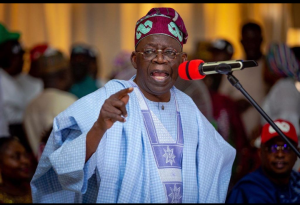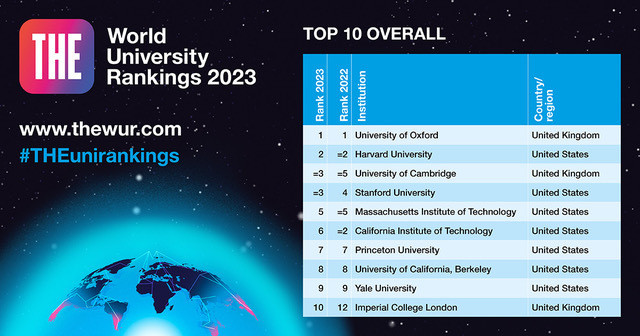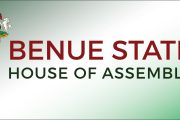The Times Higher Education, (THE), one of the six or so conducting its own world ranking of universities, is out with the 2023 exercise. There is nothing earth shaking in it as the United Kingdom and the US consolidated their primacy in ownership and location of the toughest universities in the world today. This is in the sense that although China, for example, has two universities in the global top 25, it has none in the global top 10 which only the US and UK control. Oxford retains the number one position which it has held on to going to a decade now, followed by Harvard. The UK, (Cambridge) and the US, (Stanford) share number three while the US takes the rest of numbers 5 – 9.
The closest to a really surprising ranking position must be the number 10 scored by Imperial College London, a very small school which used to be a campus of the University of London until recently. It has not got the population or size of the other universities in this top bracket, yet it is such an incredible big player as to be called the MIT of UK, or is it of Europe?

Which region/country is visible and invisible in this line-up?
It must be interesting that the University College London, (UCL) and the University of Edinburgh are out of the global top 10 list here. Similarly, the University of Chicago has not been able to maintain the 10th position which it has colonized for quite sometimes, unless if one is confusing THE ranking with QS ranking.
Some observers may also wonder how the University of Durham could go down, down to 198th position. It is a tough British university whose problem might be the same as that of a place such as the University of St Andrews which is so small in size that it cannot come up in any ranking where population/size matter. Durham is estimated to have about 20, 000 as against St Andrews’ about 12, 000 or so. The University of Bristol, another tough British campus, went to 76th in this ranking.
There is no surprise from Canada where the U of T, (University of Toronto) maintains its position within the global top 25, maintain a comfortable gap from its challenger, the University of McGill which doesn’t allow it to rest. What is though more interesting about the University of McGill is its consistency in the membership of a set of universities that are not among the top 25 but are, in every respect, very strong, be it in quality of teaching, reputation and agenda setting. Among these are the University of Melbourne, London School of Economics, King’s College London, Australian National University, the University of Copenhagen, Nanyang Technological Institute in Singapore, the University of British Columbia in Canada, the University of Queensland in Australia and some people would include the University of Warwick here. If they sustain their position in the current ranking, then the University of New South Wales and the University of Monash, all in Australia, might have joined that club and which would be interesting although this list is by no means exhaustive. It is, in fact, very arbitrary.

What is Asiwaju Bola Tinubu bringing to the table as far as transforming Nigerian universities from ‘okwu-eko’ to world class entities?
The earliest position for any university from the African continent is the 160th position, occupied by the University of Cape Town in South Africa. It must be considered unfortunate that that university is currently experiencing un-university skirmishes, including racism. It has consistently made an African presence on the list of the first global 200, thereby preceding some absolutely well-established universities in the Western world such as Trinity College Dublin or the University of Uppsala in Sweden.
The University of Ibadan and the University of Lagos make the earliest appearance on the list from Nigeria. By falling into the 400-500 bracket, it means the two Nigerian institutions are surprisingly of the same status as the following universities: the University of Syracuse, Temple University, Howard University, University of Connecticut, the University of Denver, all in the United States; University of Kwazulu Natal in South Africa; the Norwegian University of Science and Technology; City University of London; the University of Tasmania in Australia.

What is Atiku Abubakar, a former Vice-President and a university owner, saying about making Nigerian universities world class again?
It also means that they are slightly of a higher standing than SOAS, Florida International University, Sciences Po in France, the University of Bradford, the American University in Washington DC, Carleton University in Ottawa, The Open University in the UK, Rhodes University in South Africa, the University of Canterbury in New Zealand, the University of Roskilde in Denmark, the University of Malta, Makerere University in Uganda and the University of Nairobi, amongst others. The last set is where Bayero University, Kano, the University of Nigeria, Nsukka and the Obafemi Awolowo University, Ile-Ife find themselves, two steps below UI and UNILAG.
So many Nigerian universities were not ranked though assessed, scored and reported. Among them are Veritas University, Abuja, University of Uyo, Usman Dan Fodio, Sokoto State University, Samuel Adegoyega University, Salem University, Olusegun Agagu University of Science and Technology, Novena University, The Police Academy in Wudil, Niger Delta University, Michael and Cecilia Ibru University, Lagos State University, Kings University, the University of Jos.

What is there in Peter Obi’s ‘new era’ on the idea of world class universities in Nigeria?
Ranking of universities remains a controversy. It doesn’t really say anything about the real worth of any university in any realm of it, certainly not in the academic realm but it says something about which university is pulling itself as far as the university idea is concerned. In that sense, it serves an incentivizing function even as confusing as the meaning of some of the results, such as how any Nigerian university could outrank a place such as Carleton University in Canada with its concentration of highly published scholars in high impact journals.
In any case, it sends recruiters of mega companies dizzy in terms of sources of the most intelligent and innovative minds. As such, each ranking result would continue to be a sad day for a country such as Nigeria whose power elite sees victory in the defeat of her own national academics. No. No country should be happy defeating her academics. It is worse than clapping at one’s own funeral.
Britain which is about one-third of Nigeria or half of Ethiopia may have more clout in the world today because it was an empire. But it can also be argued that its powers today may be found more in the over half a dozen centres of intense problematisation of the world concentrated in that small space in London occupied by the University College London, the London School of Economics and Political Science, (LSE), King’s College London, the School of Oriental and African Studies, (SOAS) and Birkbeck University than in its empire exploits since the world is never static.
It is not clear what Atiku Abubakar, Asiwaju Bola Tinubu and Peter Obi, the leading candidates in the 2023 election are saying on what they would do on (university) education, although it is open to debate whether the issue is what they are saying or what the Nigerians are saying. It may be that given the current level of development in Nigeria, leadership is still about the man of vision who can organise the intellectual, infrastructural and consensual requirements for transforming an agrarian society like Nigeria. Has anybody seen a visionary among the leading candidates?
Intervention publishes below a list of the first 75 out of the 1799 universities from 104 countries that the Times Higher Education, (THE) ranking exercise for the year ahead covered.
| Rank | Name Country/Region |
No. of FTE Students | No. of students per staff | International Students | Female:Male Ratio | ||||||||||||||
| 1 | University of Oxford | 20,967 | 10.6 | 42% | 48 : 52 | ||||||||||||||
| 2 | Harvard University | 21,887 | 9.6 | 25% | 50 : 50 | ||||||||||||||
| =3 | University of Cambridge | 20,185 | 11.3 | 39% | 47 : 53 | ||||||||||||||
| =3 | Stanford University | 16,164 | 7.1 | 24% | 46 : 54 | ||||||||||||||
| 5 | Massachusetts Institute of Technology | 11,415 | 8.2 | 33% | 40 : 60 | ||||||||||||||
| 6 | California Institute of Technology | 2,237 | 6.2 | 34% | 37 : 63 | ||||||||||||||
| 7 | Princeton University | 8,279 | 8.0 | 23% | 46 : 54 | ||||||||||||||
| 8 | University of California, Berkeley | 40,921 | 18.4 | 24% | 52 : 48 | ||||||||||||||
| 9 | Yale University | 13,482 | 5.9 | 21% | 52 : 48 | ||||||||||||||
| 10 | Imperial College London | 18,544 | 11.2 | 61% | 40 : 60 | ||||||||||||||
| =11 | Columbia University | 21,781 | 4.5 | 38% | n/a | ||||||||||||||
| =11 | ETH Zurich | 21,665 | 14.8 | 41% | 33 : 67 | ||||||||||||||
| 13 | The University of Chicago | 15,366 | 6.0 | 36% | 47 : 53 | ||||||||||||||
| 14 | University of Pennsylvania | 21,453 | 6.3 | 23% | 53 : 47 | ||||||||||||||
| 15 | Johns Hopkins University | 17,584 | 4.7 | 29% | 53 : 47 | ||||||||||||||
| 16 | Tsinghua University | 38,324 | 11.6 | 10% | n/a | ||||||||||||||
| 17 | Peking University | 31,994 | 10.3 | 19% | n/a | ||||||||||||||
| 18 | University of Toronto | 77,468 | 25.8 | 26% | 56 : 44 | ||||||||||||||
| 19 | National University of Singapore | 32,337 | 19.8 | 25% | 51 : 49 | ||||||||||||||
| 20 | Cornell University | 24,027 | 10.3 | 26% | 51 : 49 | ||||||||||||||
| 21 | University of California, Los Angeles | 42,434 | 9.7 | 16% | 56 : 44 | ||||||||||||||
| 22 | UCL | 36,791 | 10.4 | 60% | 59 : 41 | ||||||||||||||
| 23 | University of Michigan-Ann Arbor | 45,912 | 8.2 | 17% | 50 : 50 | ||||||||||||||
| 24 | New York University | 36,337 | 9.8 | 42% | 57 : 43 | ||||||||||||||
| 25 | Duke University | 16,091 | 4.2 | 24% | 52 : 48 | ||||||||||||||
| =26 | Northwestern University | 19,175 | 13.2 | 20% | 51 : 49 | ||||||||||||||
| =26 | University of Washington | 47,727 | 10.8 | 18% | 55 : 45 | ||||||||||||||
| 28 | Carnegie Mellon University | 14,305 | 12.9 | 47% | 44 : 56 | ||||||||||||||
| 29 | University of Edinburgh | 32,844 | 11.8 | 47% | 62 : 38 | ||||||||||||||
| 30 | Technical University of Munich | 33,960 | 40.6 | 36% | 37 : 63 | ||||||||||||||
| 31 | University of Hong Kong | 18,087 | 18.2 | 43% | 54 : 46 | ||||||||||||||
| 32 | University of California, San Diego | 37,030 | 11.3 | 28% | 48 : 52 | ||||||||||||||
| 33 | LMU Munich | 35,003 | 34.2 | 19% | 61 : 39 | ||||||||||||||
| 34 | University of Melbourne | 49,588 | 23.8 | 47% | 58 : 42 | ||||||||||||||
| 35 | King’s College London | 28,967 | 11.8 | 52% | 63 : 37 | ||||||||||||||
| 36 | Nanyang Technological University, Singapore | 24,651 | 15.1 | 25% | 48 : 52 | ||||||||||||||
| 37 | London School of Economics and Political Science | 11,118 | 11.9 | 73% | 55 : 45 | ||||||||||||||
| 38 | Georgia Institute of Technology | 28,826 | 24.7 | 40% | 33 : 67 | ||||||||||||||
| 39 | The University of Tokyo | 26,112 | 10.5 | 15% | n/a | ||||||||||||||
| 40 | University of British Columbia | 56,452 | 18.9 | 34% | 55 : 45 | ||||||||||||||
| 41 | École Polytechnique Fédérale de Lausanne | 11,641 | 12.3 | 62% | 30 : 70 | ||||||||||||||
| 42 | KU Leuven | 47,663 | 36.5 | 18% | 51 : 49 | ||||||||||||||
| 43 | Heidelberg University | 19,347 | 13.5 | 21% | 55 : 45 | ||||||||||||||
| 44 | Monash University | 58,725 | 42.5 | 41% | 57 : 43 | ||||||||||||||
| 45 | Chinese University of Hong Kong | 18,468 | 19.0 | 21% | n/a | ||||||||||||||
| 46 | McGill University | 32,309 | 12.5 | 30% | 60 : 40 | ||||||||||||||
| 47 | Paris Sciences et Lettres – PSL Research University Paris | 16,218 | 15.0 | 22% | 51 : 49 | ||||||||||||||
| 48 | University of Illinois at Urbana-Champaign | 48,674 | 17.4 | 22% | 48 : 52 | ||||||||||||||
| 49 | Karolinska Institute | 8,021 | 9.9 | 27% | 70 : 30 | ||||||||||||||
| 50 | University of Texas at Austin | 49,171 | 17.4 | 10% | 53 : 47 | ||||||||||||||
| Rank | Name Country/Region |
No. of FTE Students | No. of students per staff | International Students | Female:Male Ratio | ||||||||||||||
| 51 | Fudan University | 36,318 | 11.9 | 9% | 52 : 48 | ||||||||||||||
| 52 | Shanghai Jiao Tong University | 37,478 | 11.5 | 8% | 42 : 58 | ||||||||||||||
| 53 | The University of Queensland | 41,372 | 34.2 | 41% | 55 : 45 | ||||||||||||||
| =54 | University of Manchester | 37,036 | 14.2 | 44% | 55 : 45 | ||||||||||||||
| =54 | University of Sydney | 45,853 | 19.0 | 45% | 58 : 42 | ||||||||||||||
| 56 | Seoul National University | 26,209 | 15.1 | 10% | n/a | ||||||||||||||
| 57 | Washington University in St Louis | 14,420 | 7.8 | 24% | 53 : 47 | ||||||||||||||
| 58 | The Hong Kong University of Science and Technology | 9,864 | 21.0 | 32% | n/a | ||||||||||||||
| 59 | Wageningen University & Research | 15,404 | 18.6 | 27% | 55 : 45 | ||||||||||||||
| 60 | University of Amsterdam | 29,157 | 14.5 | 32% | 59 : 41 | ||||||||||||||
| 61 | Brown University | 10,037 | 10.1 | 21% | n/a | ||||||||||||||
| 62 | Australian National University | 16,758 | 14.6 | 51% | 52 : 48 | ||||||||||||||
| 63 | University of California, Davis | 37,639 | 13.1 | 18% | 60 : 40 | ||||||||||||||
| 64 | University of California, Santa Barbara | 25,860 | 28.5 | 20% | 54 : 46 | ||||||||||||||
| 65 | University of Southern California | 40,549 | 12.6 | 22% | 49 : 51 | ||||||||||||||
| 66 | Utrecht University | 32,532 | 17.1 | 13% | 62 : 38 | ||||||||||||||
| 67 | Zhejiang University | 46,124 | 12.0 | 16% | n/a | ||||||||||||||
| 68 | Kyoto University | 22,269 | 9.2 | 12% | 25 : 75 | ||||||||||||||
| 69 | University of North Carolina at Chapel Hill | 31,080 | 7.9 | 8% | 59 : 41 | ||||||||||||||
| 70 | Delft University of Technology | 20,299 | 16.1 | 31% | 31 : 69 | ||||||||||||||
| =71 | Boston University | 27,243 | 10.8 | 31% | 59 : 41 | ||||||||||||||
| =71 | UNSW Sydney | 45,133 | 36.3 | 40% | 47 : 53 | ||||||||||||||
| 73 | Charité – Universitätsmedizin Berlin | 8,429 | 18.0 | 21% | 64 : 36 | ||||||||||||||
| 74 | University of Science and Technology of China | 18,573 | 8.1 | 6% | n/a | ||||||||||||||
| 75 | University of Groningen | 30,009 | 24.4 | 28% | 52 : 48 | ||||||||||||||




























